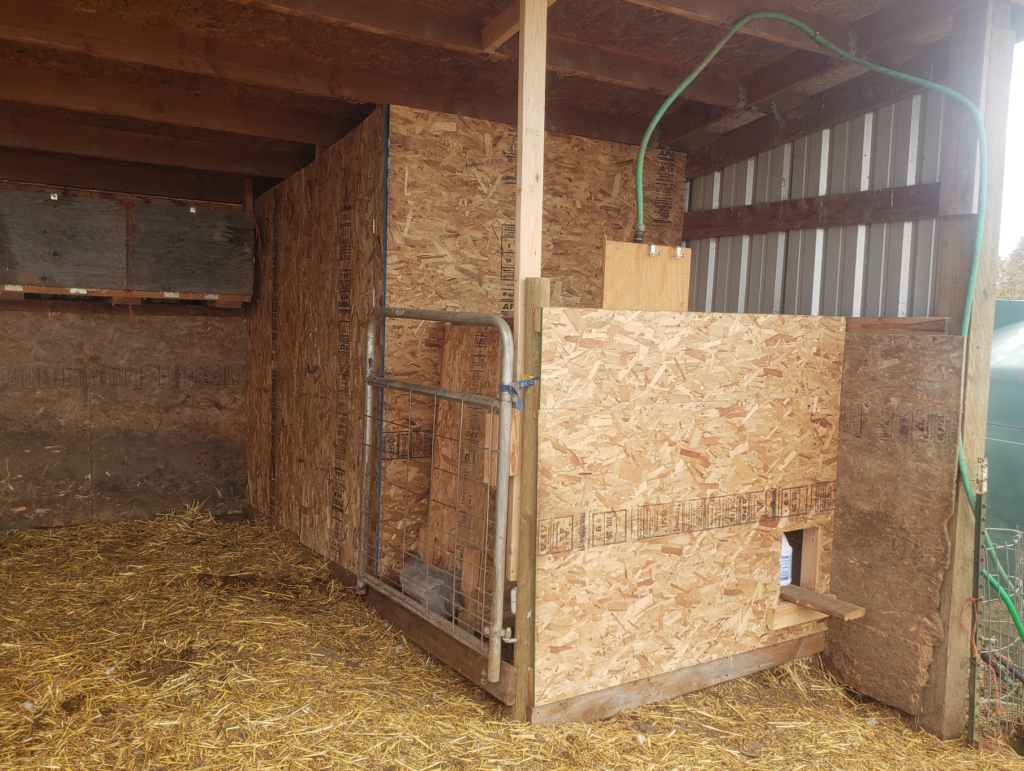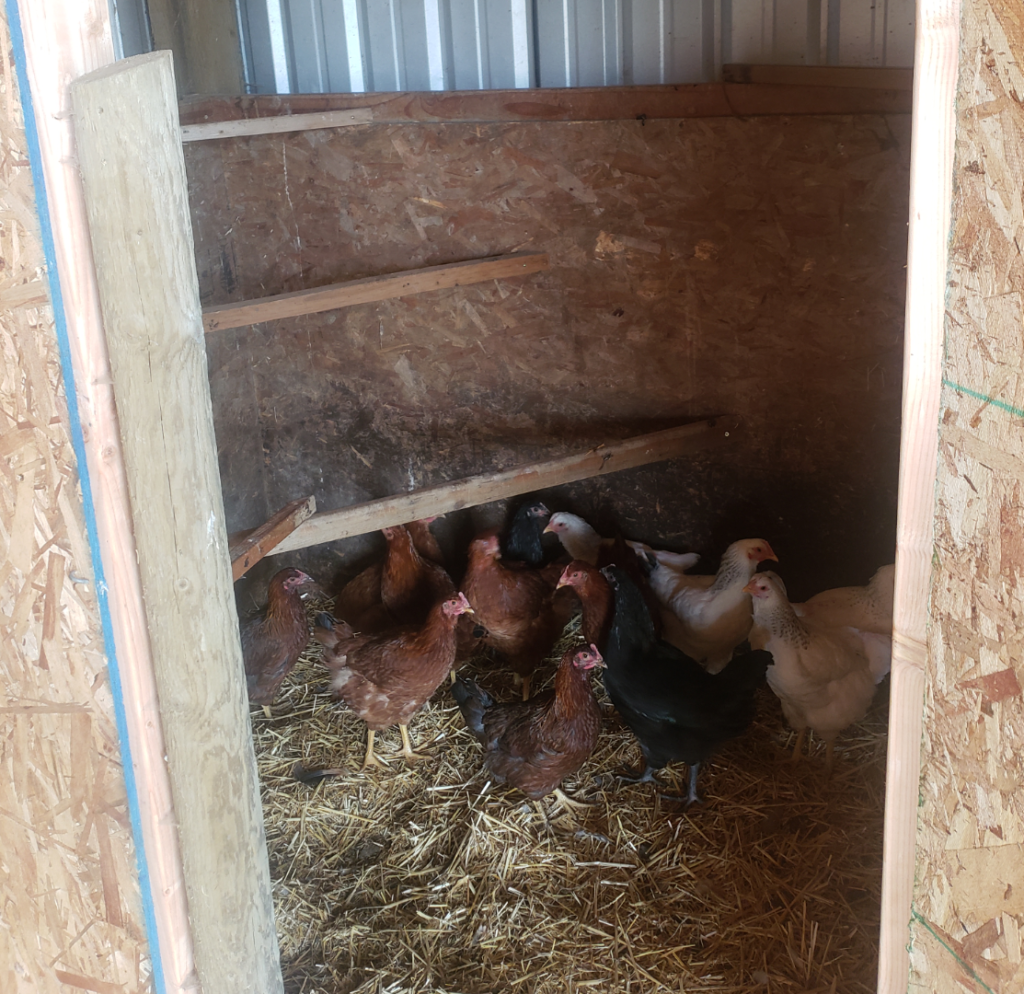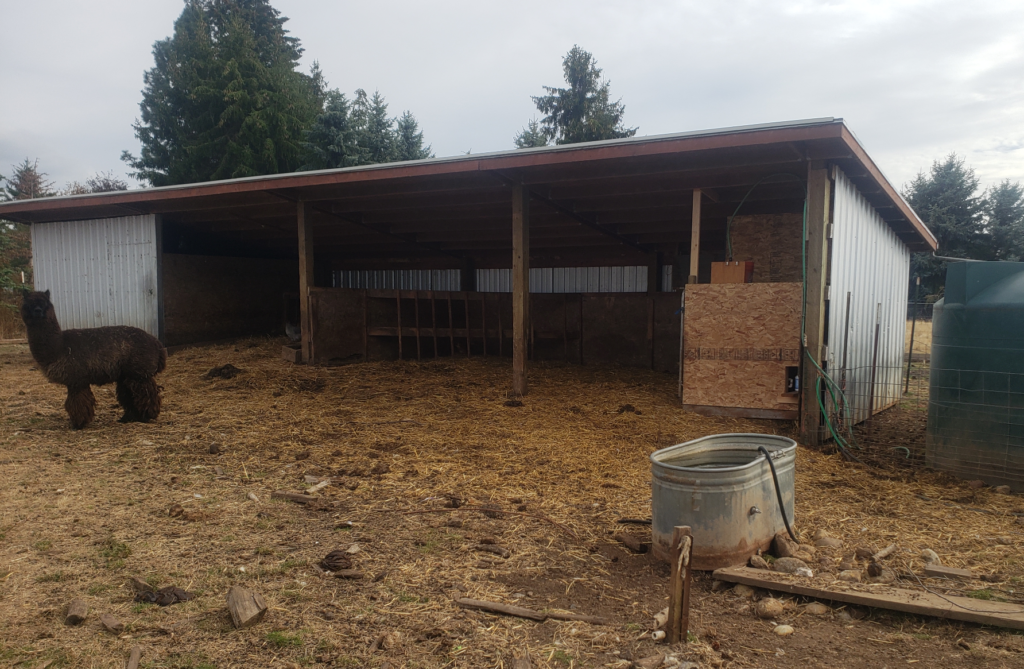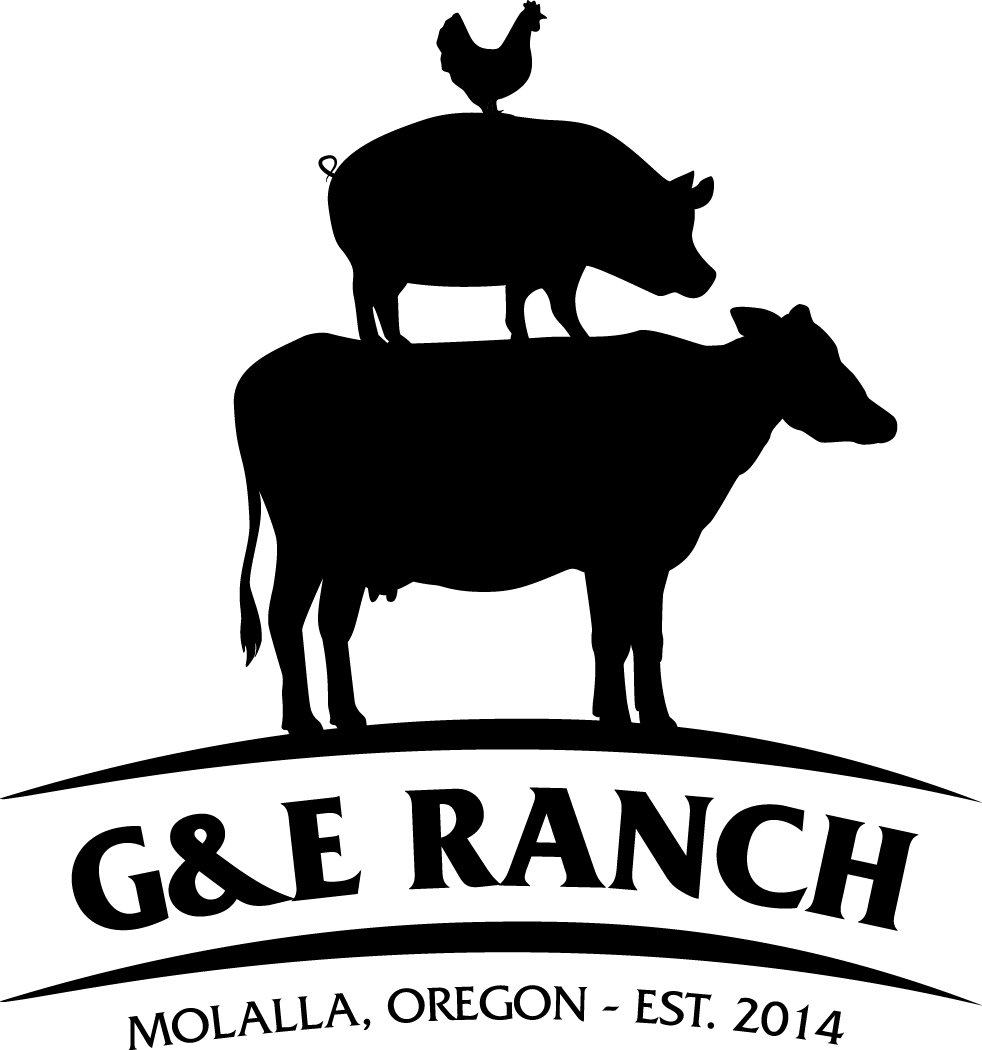As we clean up the ash from the nearby fires and get our lives back in order this week, we have made some shifts in animals (just like in life). Peyton finally started school this week, only about a month later than normal, which is actually very good considering how 2020 has gone. We were very thankful that she got to go in person from day one. If she were one grade older, she would have had to start virtually.
Well back to the animals…

This week, we moved 50 adolescent chickens that had been living in the barn to outside. We wanted to put ‘some’ of them up into our high use area with about 8 other chickens we put up there a couple of months ago. The rest of the chickens were put in Eric and Dave’s memorial chicken coop (the red one). Placing chickens in the high use area is primarily for fly control and to spread out the manure caused by the big animals. We have had chickens in the high use area for the past few years, but they all seem to disappear over time. Last summer, we made some progress by building heavy-duty laying boxes that the cows can’t easily destroy. However, the chickens were forced to drink water from the big animal trough, eat only what they could find, and roost in open areas under the shelter. This could have worked just fine with the exception of raccoons plucking off roosting hens at night. Therefore, we decided to build a small chicken coop under the existing big-animal shelter. Building anything like this is problematic when there are cows, hogs, sheep, and other large animals around. Large animals, particularly cattle, want to break everything they can. Therefore, we built a ‘fairly’ heavy-duty vestibule outside their coop entrance. It needed to be large enough to allow an automatic door, automatic feeder, and automatic waterer to be placed and protected, but it needed to be small at the same time as to limit the space we were taking away. This vestibule has everything a chicken run would have, but there is no room for them to hang out. They have an opening in the vestibule that allows them to easily go out to the high-use area, and this opening is built to keep large animals, particularly pigs, out.

The laying box unit was moved and slightly modified to allow the new chickens to access it from the coop only. One side was blocked off to keep predators out while the other side gives chickens access to lay eggs. Hopefully, this will all work.

We still of 40 more adolescent chickens and 50 adolescent ducks in the barn. Stay tuned for their progress….

Recent Comments